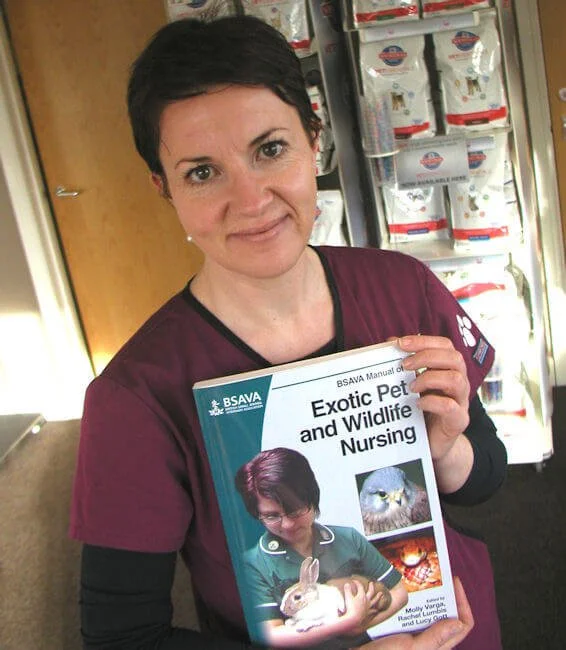Molly Varga Gives Advice on Cushing’s Disease in Hamsters
Cushing’s Disease is a fairly unusual disease that is occasionally seen in hamsters.
Specialist vet Molly Varga provides some further insight on how it can affect pet hamsters and what veterinary treatment there is available to diagnose and treat the disease.

Molly says:
Cushings Disease (Hyperadrenocorticism/HAC) In Hamsters
- Cushings disease (or HAC) is a disease that stems from an over-active adrenal gland.
- The adrenal gland sits next to the kidney and produces adrenaline and various steroid hormones.
- Cushings disease is specifically an over-production of corticosteroids (cortisol) which results in increased drinking and appetite, as well as a sagging abdomen and thin, balding skin.
- Cushings disease occurs infrequently in hamsters and can be mistaken for diabetes (due to increased drinking) or cutaneous lymphoma (due to skin changes).
- Diagnosis of Cushings disease can be made in the same way as in cats and dogs: namely by checking a blood test to rule out diabetes and confirm an elevated steroid level. In some cases a stimulation test using a synthetic hormone designed to stimulate the adrenal gland is done. In many cases however the difficulty in getting a blood sample and the costs of testing can be prohibitive. A urine cortisol/creatinine ratio is a less invasive test; however it is also slightly less reliable for diagnosis. A hamster that is drinking more than 100ml/kg body weight in a 24 hour period, with either a positive urine cortisol creatinine ratio or elevated basal cortisol is likely to have Cushings disease.
- Treatment can be more tricky: many of the clinical signs while obvious and visible are not painful, so the decision to treat must be carefully considered. The drugs available in the UK for treatment include ‘Vetoryl’ and ketoconazole. According to the ‘cascade of prescribing’ in the UK, Vetoryl is the most closely licensed drug for use in hamsters because it is licensed to treat Cushings disease in other species, however it comes in a tablet form with enteric coating making it difficult to split or dissolve in liquid to get an accurate dose. Ketoconazole is an antifungal drug that kills off cells in the adrenal cortex. While this drug is licensed in the UK for other uses, it is not licensed for used in Cushings Disease. Ketoconazole also does not have a reversible action, while Vetoryl does. Doses and methods of use of these drugs can be obtained from your veterinary surgeon.
- There are several other drugs mentioned often on the internet, however most of these are either old, cause significant side-effects or are not available in the UK.
- The best way to decide whether the treatment is working is by measuring the water intake over 24 hours: successful treatment should result in a reduction of drinking and an improvement in the hair growth and skin condition.
- Treatment with ‘Vetoryl’ is likely to be required long-term, while if ketoconazole is used then once an acceptable level of water intake and skin improvement is reached, then treatment can be stopped (although it may need to be re-started if clinical signs recur).
- Eventually the skin damage, weight-loss and muscle wasting may mean that the hamster becomes uncomfortable, in which case further help should be sought from your veterinary surgeon.




